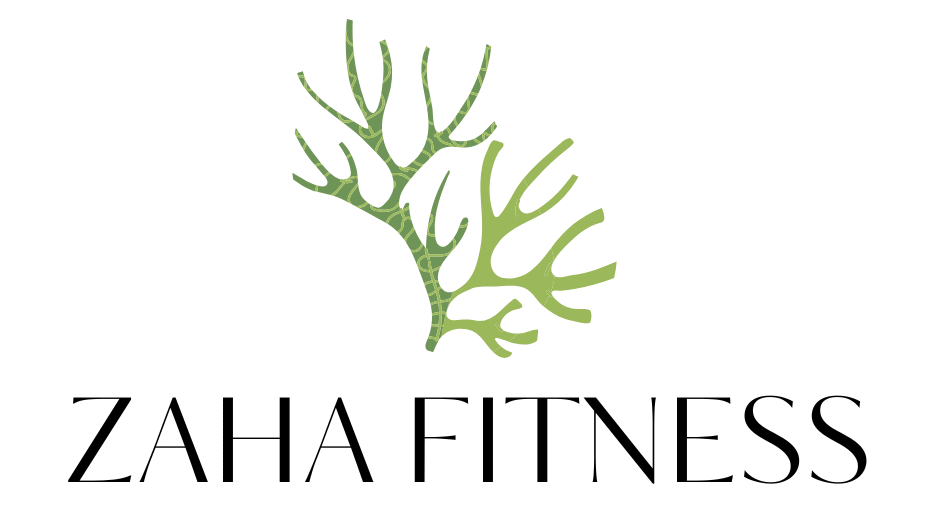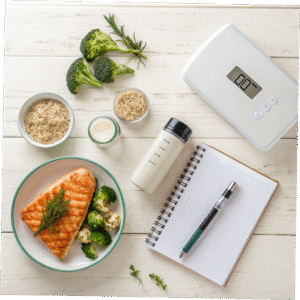Why this is hot right now: Medications like semaglutide (Ozempic/Wegovy) and tirzepatide (Mounjaro/Zepbound) have changed the weight‑loss conversation. They reduce appetite, improve blood sugar, and can lead to significant fat loss. But the best results happen when you combine them with smart training, enough protein, and sustainable habits that protect your muscle and metabolism. This guide gives you a practical, science‑savvy roadmap.
Note: This is general education, not medical advice. Always work with your clinician before starting or changing any medication.

What Are GLP‑1/GIP Meds—and How Do They Work?
- GLP‑1 agonists (e.g., semaglutide) and dual GLP‑1/GIP agonists (e.g., tirzepatide) act on gut‑brain signals to:
- Increase fullness and reduce hunger
- Slow gastric emptying (food stays in the stomach longer)
- Improve insulin secretion and lower blood sugar
- Translation: You feel satisfied with smaller portions and experience fewer cravings. That makes a calorie deficit easier without white‑knuckle dieting.
Must Read: 12 Proven Ways to Lose Belly Fat Quickly
Who Are They For?
Typical eligibility (may vary by country and clinician):
- BMI ≥ 30, or BMI ≥ 27 with a weight‑related condition (e.g., prediabetes, type 2 diabetes, high blood pressure, sleep apnea)
- People who’ve tried lifestyle changes and need extra help for medical or functional reasons
Avoid or use with caution: pregnancy/breastfeeding, personal/family history of medullary thyroid carcinoma or MEN2, active gallbladder disease or pancreatitis, severe GI disorders like gastroparesis. Diabetics using insulin or sulfonylureas need close supervision to reduce hypoglycemia risk.
Benefits Beyond the Scale
- Fat loss and improved waist circumference
- Better glycemic control (A1c reduction)
- Potential improvements in blood pressure, fatty liver markers, and cardiovascular risk factors
- Lower joint stress, better mobility, more energy for life and training
Must Read: The 10 Best Vegan Meal Delivery Services in 2025
The Big Watch‑Out: Muscle Loss
Rapid weight loss can cost muscle. Muscle is your metabolic insurance—it keeps your resting burn higher, supports insulin sensitivity, and protects function as you age. Protect it with three pillars:
- Strength training 2–4 days/week
- Protein at each meal (enough to hit your daily target)
- Adequate recovery (sleep, hydration, micronutrients)
Your Fitness + Nutrition Blueprint on GLP‑1s
- Strength (non‑negotiable)
- 2–4 sessions/week
- Emphasize compound moves: squats, hip hinges (deadlifts), push (bench/push‑ups), pull (rows/pull‑ups), carries (farmer’s walks)
- 3–4 sets of 5–12 reps; rest 60–120 seconds; progress weight/reps gradually
- On low‑energy days, reduce load or sets but keep the habit alive
- Cardio
- Zone 2 (easy‑moderate pace where you can speak in full sentences): 2–3 sessions of 30–45 minutes
- Optional: 1 short HIIT session/week (e.g., 6–10 rounds of 30 seconds hard, 90 seconds easy)
- Daily steps: aim 6,000–10,000 for general health and appetite regulation
- Protein
- Target: 1.6–2.2 g/kg body weight per day (0.7–1.0 g/lb). If appetite is low, hit the lower end consistently.
- Meal targets: 25–40 g per meal to reach the “leucine threshold” for muscle protein synthesis
- Easy options: Greek yogurt, eggs, tofu/tempeh, fish, chicken, legumes, whey/plant protein shakes, cottage cheese
Must Read: 9 Benefits of Protein for Health and Athletic Performance
- Carbs and fats
- Keep carbs around training for energy: fruit, oats, rice, potatoes, whole‑grain wraps
- Prefer unsaturated fats: olive oil, nuts, seeds, avocado, fatty fish
- Very high‑fat meals can worsen nausea early on—go lighter until you know your tolerance
- Hydration and micronutrients
- 2–3 liters of fluid daily; add electrolytes if you sweat heavily or feel light‑headed
- Fiber 25–35 g/day for regularity; introduce gradually
- Consider a basic multivitamin if intake is low; discuss vitamin B12, D, and iron with your clinician if you’re at risk of deficiency
- Nausea hacks
- Smaller, more frequent meals
- Ginger tea/chews; peppermint
- Eat slowly, avoid lying down right after eating
- Ask your clinician about dose adjustments or anti‑nausea strategies if needed
At‑a‑Glance Table: Common Side Effects and Practical Fixes

Zain Ul Hassan is the founder of Zaha Fitness. He writes practical, research-backed articles on fitness, weight loss, and natural health. His goal is to help people live healthier lives using simple and effective tips.



